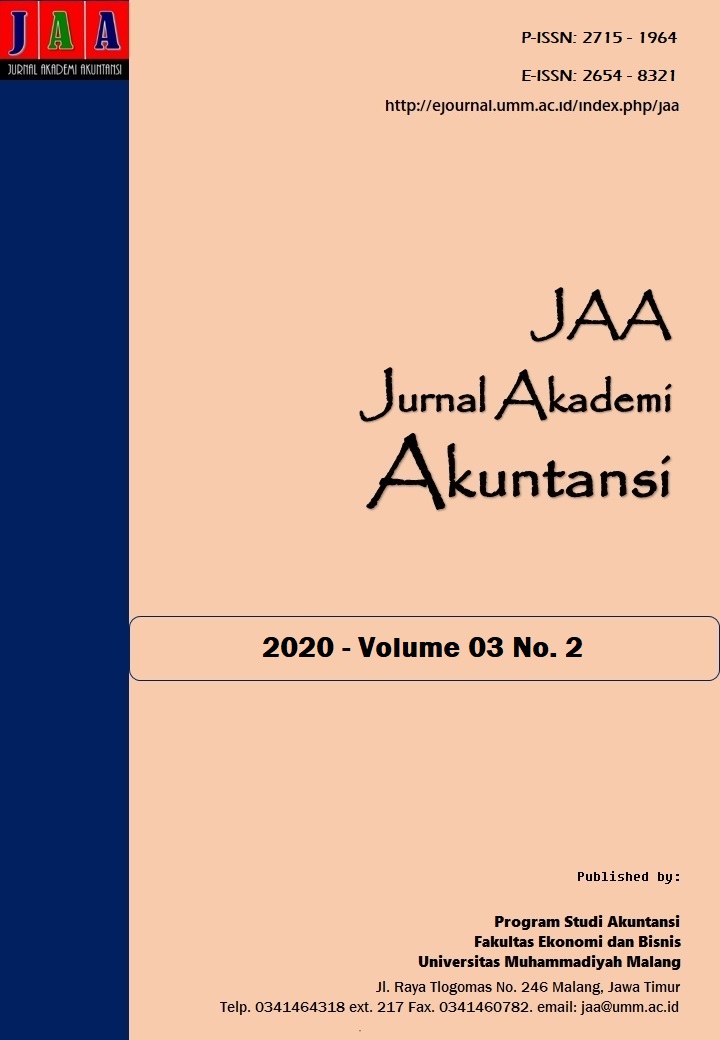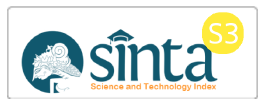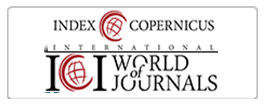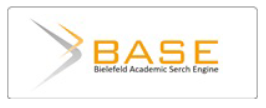SISTEM PENGENDALIAN INTERNAL PENERIMAAN KAS (Studi Kasus Pada Cv Sekartika Jati Rencana)
DOI:
https://doi.org/10.22219/jaa.v3i2.13300Keywords:
Cash, Effectiveness, The Internal Control System Of CashAbstract
The aim of this study was to assess the effectiveness of the internal cash control system conducted by CV Sekartika Jati Rencana. Internal control system is a procedure used by management as a monitoring tool that every policy has been carried out by all employees. The internal control system of cash receipts is used to maintain the company's wealth, especially cash. This study analyzes the internal control system of cash receipts applied by CV Sekartika Jati Rencana and compared with the theory of internal control systems proposed by the Committee of Sponsoring Organizations (COSO). The results of this study are all internal cash control systems implemented by the CV Sekartika Jati Rencana have been effectively proven by the form that has been numbered printed, each sales document has been printed in duplicate and checking periodically. But there are some internal control systems for cash receipts that are still not effective
Downloads
References
Barata, B. A. W., & Kurniawati, D. (2019). Evaluasi Sistem Pengendalian Intern Penerimaan Kas Terhadap Penjualan Tunai Pada Koperasi Karyawan Pt Anabatic Technologies Tbk. Paper Presented At The Proseding Seminar Nasional Akuntansi.
Coso, I. (2004). Enterprise risk management-integrated framework. Committee of Sponsoring Organizations of the Treadway Commission, 2.
IAI. (2015). Exposure Draft Kerangka Konseptual Pelaporan Keuangan. Jakarta: Ikatan Akuntan Indoneisa.
Janvrin, D. J., Payne, E. A., Byrnes, P., Schneider, G. P., & Curtis, M. B. (2012). The updated COSO Internal Control-Integrated Framework: Recommendations and opportunities for future research. Journal of Information Systems, 26(2), 189-213.
Krismiaji. (2015). Sistem Informasi Akuntansi. jogjakarta: Uup Stim Ykpn.
Lukman, M., & Nurjanah, Y. (2014). Analisis Pengendalian Intern Atas Penjualan Dan Penerimaan Kas Terhadap Efektifitas Perusahaan (Studi Kasus pada PT Astra International, Tbk–Isuzu Cabang Bogor).
Marakas, G. M., & O'brien, J. A. (2017). Pengantar Sistem Informasi. Jakarta: Salemba Empat.
Mulyadi. (2016). Sistem Akuntansi. Jakarta Salemba Empat.
Putri, S. E., & Setiawan, A. B. (2016). Analisis Sistem Pengendalian Intern Terhadap Sistem Akuntansi Penerimaan Dan Pengeluaran Kas Pada Pt. Jasa Raharja (Persero) Kantor Perwakilan Bogor. JURNAL AKUNIDA, 2(1), 27-42.
Rae, K., Sands, J., & Subramaniam, N. (2017). Associations among the five components within COSO internal control-integrated framework as the underpinning of quality corporate governance. Australasian Accounting, Business and Finance Journal, 11(1), 28-54.
Rama, D. V., & Jones, F. L. (2008). Sistem Informasi Akuntansi. Jakarta: Salemba Empat.
Sumurung, M., Piet, C., & Ilat, V. (2016). Analisis Pengendalian Penerimaan dan Pengeluaran Kas pada PT. Manado Media Grafika. Jurnal EMBA: Jurnal Riset Ekonomi, Manajemen, Bisnis dan Akuntansi, 3(4).
Widjajato, N. (2001). Sistem Informasi Akuntansi. Jakarta: Erlangga.Downloads
Published
Issue
Section
License
Copyright (c) 2020 Hilaatul Mila Kusnia; Achmad Syaiful Hidayat Anwar; Mudrifah

This work is licensed under a Creative Commons Attribution-NonCommercial-ShareAlike 4.0 International License.
Jurnal Akademi Akuntansi is licensed under a Creative Commons Attribution-NonCommercial-ShareAlike 4.0 International License.
Authors who publish with this journal agree to the following terms:
- Authors retain copyright and grant the journal right of first publication with the work simultaneously licensed under a Creative Commons Attribution-NonCommercial-ShareAlike 4.0 International License that allows others to share the work with an acknowledgment of the work's authorship and initial publication in this journal.
- Authors are able to enter into separate, additional contractual arrangements for the non-exclusive distribution of the journal's published version of the work (e.g., post it to an institutional repository or publish it in a book), with an acknowledgment of its initial publication in this journal.
- Authors are permitted and encouraged to post their work online (e.g., in institutional repositories or on their website) prior to and during the submission process, as it can lead to productive exchanges, as well as earlier and greater citation of published work (See The Effect of Open Access).
Jurnal Akademi Akuntansi dilisensikan di bawah lisensi Creative Commons Attribution-NonCommercial-ShareAlike 4.0 International.
Penulis yang menerbitkan artikel di jurnal ini menyetujui ketentuan berikut:
- Penulis mempertahankan hak cipta dan memberikan hak jurnal atas publikasi pertama dengan karya yang secara serentak dilisensikan di bawah Lisensi Pengaitan Creative Commons yang memungkinkan orang lain untuk berbagi karya dengan pengakuan atas karya penulis dan publikasi awal dalam jurnal ini.
- Penulis dapat masuk ke dalam pengaturan kontrak tambahan yang terpisah untuk distribusi non-eksklusif versi karya jurnal yang diterbitkan (misalnya, mempostingnya ke repositori institusional atau mempublikasikannya dalam sebuah buku), dengan pengakuan publikasi awalnya di jurnal ini.
- Penulis diizinkan dan didorong untuk memposting pekerjaan mereka secara online (misalnya, di repositori institusional atau di situs web mereka) sebelum dan selama proses pengajuan, karena dapat mengarah pada pertukaran produktif, serta kutipan pekerjaan sebelumnya dan yang lebih besar (Lihat Pengaruh Akses Terbuka).
























